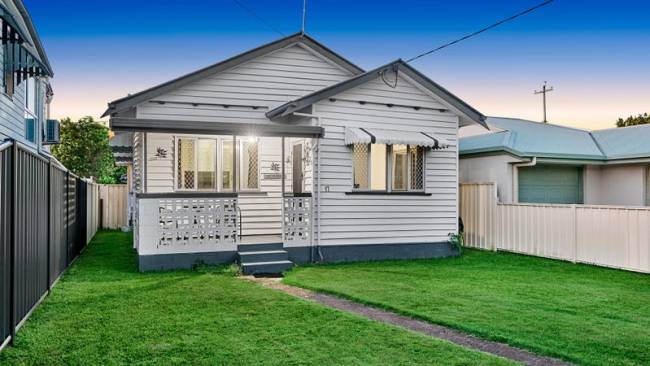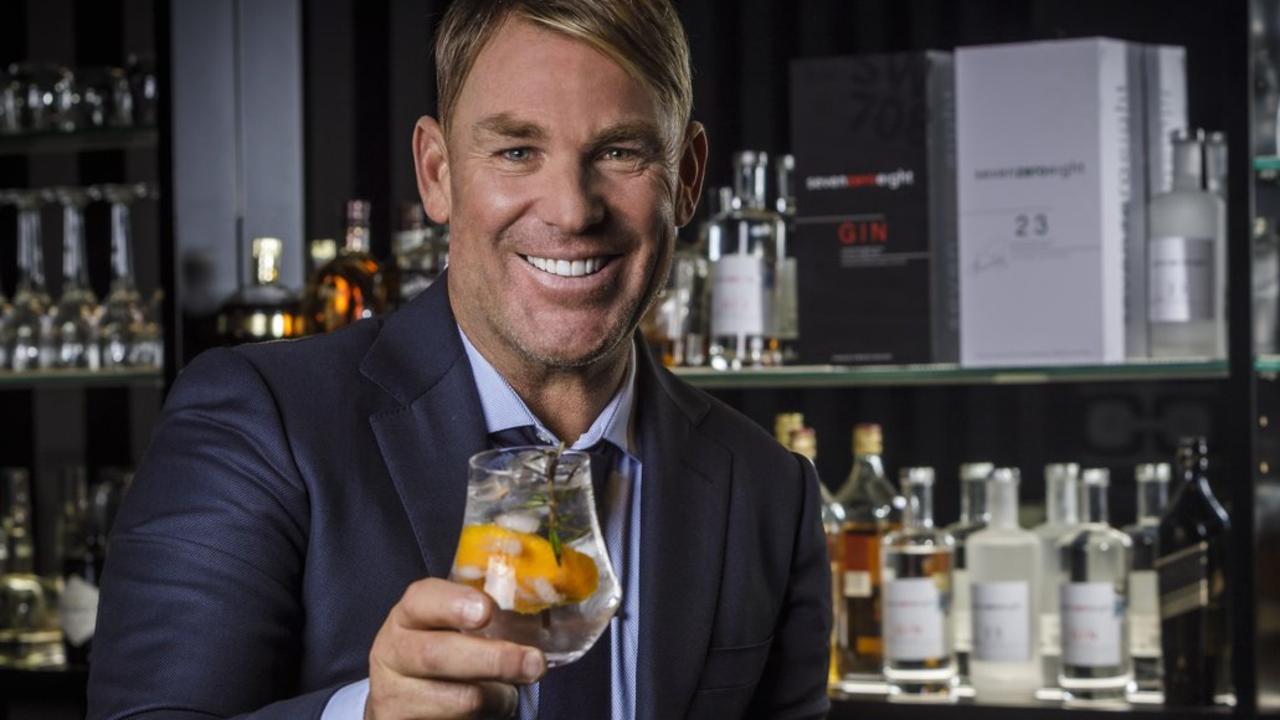Sustainable living, sustainable gardening: tips on compost, mulching, insects, water conservation, plants and pets
More and more families in the suburbs are turning to the land for the lifestyle and diet they desire.
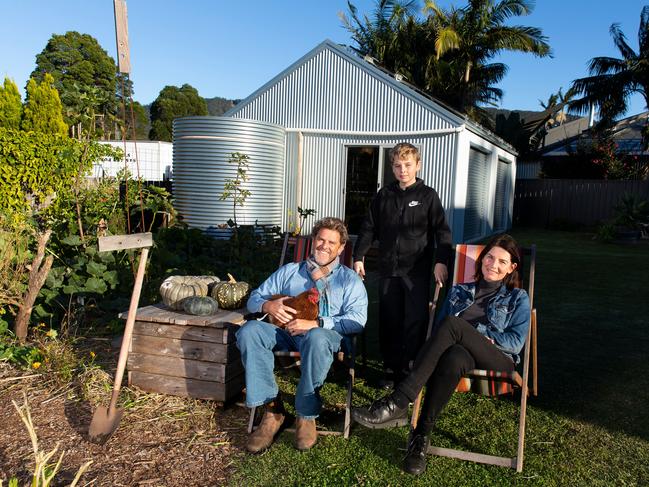
Property
Don't miss out on the headlines from Property. Followed categories will be added to My News.
The year was 2016 and Adam Russell and Suzy Pickles and their teenage sons were living a fast-paced urban life in a small house (the footprint was a shoebox-sized three metres by eight metres).
The family of four was happy enough but yearning for more space.
They wanted room to move and to grow their own food too, but a large tree overshadowed their poky backyard, making it virtually impossible to grow even the most easy of vegetables. A former country girl, Suzy in particular ached for a more intimate connection to nature and fresh air, but Adam couldn’t see how they could make the change without disrupting his successful career as an architect.

Then, Adam merged his practice with a larger firm.
But the move wasn’t what he had hoped which caused him to reconsider his future. “I had a slow epiphany,” he says.
“I thought, ‘What are we doing?’. I realised that I was living to work, rather than working to live. And I said to Suzy ‘Let’s give it a go’.”
‘It’ turned out to be moving the family to Bulli, a seaside suburb of Wollongong, an hour’s drive south of Sydney, in December 2019.
BULLI DREAMING
There, they found a run-down, mid-century asbestos-riddled home on a quarter-acre block. They set about transforming it into a temple of regional sustainability, complete with new, energy efficient double glazing and insulation, an edible garden that Suzy estimates supplies around 90 per cent of the family’s fruit and vegetables, rainwater tanks, solar energy, four chickens and a beehive.
The couple paid for the property with the sale of their city home, and have launched a new collaborative design business, Saltbush Projects, which combines Adam’s architectural skills and Suzy’s graphic design experience, and will soon begin hosting harvesting and cooking events at the family home.
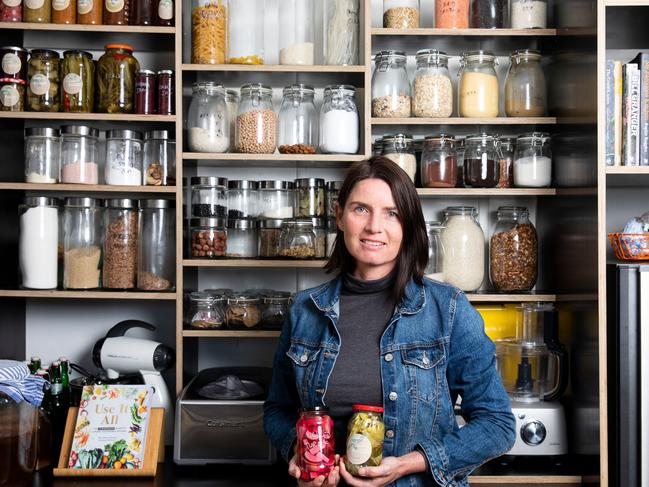
They’ve joined local food swap groups and Suzy began a remote Diploma of Sustainable Living from the University of Tasmania, while Adam is studying permaculture.
“Adam surfs every day and we’re just generally healthier,” Suzy says.
“It’s not that our life in Sydney was a terrible life. But I never felt we looked up and noticed the sun or the clouds. Today, we find ourselves with more time – time between the things we have to do and time with each other.”
A GREEN LIFE
Suzy and Adam are far from alone in their desire to move away from the big smoke.
It’s no secret that city-based Australians are swapping rush hours and rigid scheduling for a slower way of life in the country in record numbers. In fact, 2020 saw the largest exodus from the capital cities since 2001, spurred at least partly by the Covid-19 crisis. But there’s more to these moves than a simple desire for space and pretty views. Many of us seem to be consciously or unconsciously rejecting our increasingly industrialised lives that do little for our own health or that of the planet, in favour of a more sustainable existence.
In 2020, Australians installed 362,000 rooftop solar panel systems, a jump of 28 per cent from the year before.
Backyard beekeeping is also enjoying a huge surge, with numbers doubling in the past decade and 30,000 people registering themselves as beekeepers in 2020 alone. A recent survey from Southern Cross University says that more than eight in 10 of us plan to make a conscious effort to buy from eco-friendly brands in the future.
“I think we’re starting to see the limitations of the way we’ve been living our lives for the past 50 years,” says Dr Dominique Hes, lead researcher at Plant Life Balance, an organisation which promotes the benefits of plants for health and wellbeing.
“We’re all asking ourselves – how can I live better? How can I feel healthier and live like I have more purpose? And it’s not just because it’s a greenie thing. Sustainable choices are simply starting to feel more aligned with what all of us want out of life.”

That new sense of purpose didn’t come without a few mind-shifts for Adam and Suzy. The move meant that both of them wound their careers back, which took some adjustment.
“It took a while to feel comfortable and involved a recognition that being hands-on and productive around the home was an equally valid form of work,” says Adam.
“These days we have values that are more about the bigger picture of the earth and the land and our health,” says Suzy.
“Instead of working hard to try and change the systems around us, we simply changed how we lived.”

HOW TO LIVE MORE SUSTAINABLY
Build soil
Not every backyard has the right nutrients to grow food but if you build a base of enriched soil, food plants should thrive.
“We build up beds straight over the lawn, layering up seaweed, lawn clippings, horse manure and straw,” says Suzy, who also harvests her plant seeds.
Reuse and recycle
Adam and Suzy repurposed the slab of a collapsed shed into a bike shelter and found old hardwood palings in the neighbourhood to create their own picket fence.
“Adam also joined an organisation called ‘Make Do’ which is a library of things,” Suzy says, so the family can borrow the tools or appliances they need for short projects, rather than buying them.
Pickle and preserve
Whether you grow your own food or not, get the most out of an abundant season of your favourite fruit or vegetables by preserving the excess for leaner times.
“When we have, say, a bumper crop of turnips, I preserve them,” says Suzy.
“Now we have this wall of ingredients. So if I don’t have time to cook I just reach for a jar of homemade zucchini and tomato passata, serve it over pasta and we have a delicious, nutritious meal from the garden.”
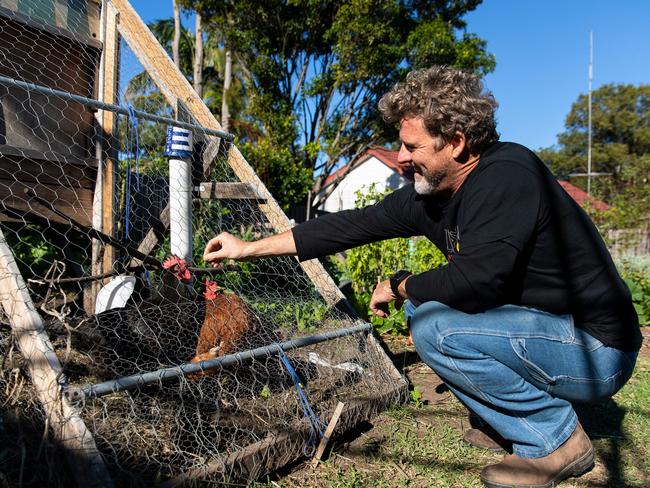
BEGINNER’S GUIDE TO BACKYARD CHICKENS
Check with your local council
All Australian states allow backyard chooks, but there are different restrictions around the numbers of birds you’re allowed.
Choose or build a secure coop
Even cities have predators such as foxes and cats, so your chickens will need to be safely locked away at night.
A good coop should also have an enclosed egg-laying area and bars where your chooks can roost at night.
Select your breed
Popular chook types for abundant eggs include Australorps, Isa Browns and Leghorns.
Food of choice
As long as your chooks get regular food, such as pellets and kitchen scraps, their coop is cleaned regularly and they’re wormed regularly and checked for parasites and lice, you should get a steady supply of delicious, fresh eggs.



